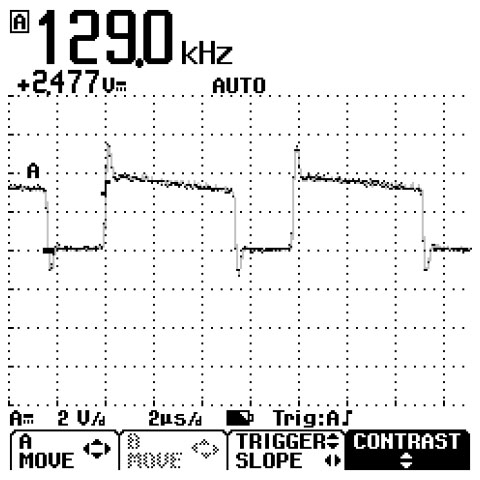To answer your question on battery vs emitter current it is imperative to know how a light is driven.
In some cases, the emitter is driven directly off the battery, through a resistor or through a PWM'd (pulse width modulated) switch. In these cases, the emitter currect and battery current should be the same as it is a series-connected circuit and the current flows in a loop.
A reasonable measurement of the current in the first two cases can usually be done with a DMM (Digital MultiMeter) on the highest current setting (often 10A). Why the 10A setting when measuring only a fraction of an amp? Because the 10A setting will introduce the least resistance to the circuit under test and therefore have a smaller impact on the operating parameters of the circuit. In essence, there is a slight voltage drop across the point where you insert the DMM in series with the circuit when measuring current - this voltage drop results in less voltage getting to the circuit and can result in a higher (or lower) reading than if the DMM were not in the circuit.
For the PWM direct-driven circuits (such and Lion cub/heart, POP, FLuPIC), you would want to measure the averaged current. Unfortunately for measurement purposes, many TrueRMS DMMs do not measure accurately at the switching frequencies used in these drivers.
That covers the direct-driven type lights. The other type of lights use switcher-type drivers where electrical energy is converted to another form (magnetic field in a tiny coil or energy stored in capacitors for charge pump circuits) and then back to electrical energy at a higher/lower (boost/buck) voltage. (There are many flavours of converters out there.) This energy conversion comes at a cost (converter losses). Converter losses are usually presented as converter efficiency. The efficiency figure should be presented as a range because, the efficiency will vary over the input and output range of the converter.
To sum this up in an equation:
Power Out = Power In - Efficiency Losses
Power = Voltage x Current
Note that for a given power level, if you change either the voltage or the current, the other must go up or down to deliver the same power. So, to put that into real terms, if you have a fully regulated driver such as a NexGen that puts out a constant current, the current draw from the battery will go up as the battery voltage drops until the driver can no longer remain in regulation.
For example:
Let's take an non-existant lossless regulated driver (efficiency = 100%).
Let's assume it drives a LuxIII at 800mA and the Vf at this current is 3.8 volts.
Power to the emitter is: P=V*I = 3.04Watts
Let's power this with a primary Lithum CR123A. The battery will be under load so the voltage will sag. Let's say it sags to 2.8 Volts under this 3.04Watt load (remember that we have a 100% efficient converter).
3.04 Watts (P) = 2.8V (V) * (I)
I = 1.086 Amps
So in this case, the battery current would need to be 1.086 Amps to produce 0.8 Amps at the higher emitter voltage.
When the battery becomes depleted, the voltage will drop even more and teh current will have to continue to rise to keep the driver in regulation. Eventually, the battery will not be able to supply enough power and the driver will fall out of regulation.
Now, let's look at the effect of converter efficiency. If, in the example just given, the converter efficiency was 75%, the battery would have to supply 3.04/0.75 = 3.58 Watts to get 4.05 Watts to the emitter.
Let's assume the same battery sag (2.8V). 3.58/2.8 = 1.44 Amps! Compare that to the ideal driver above.
Note that the Q3 has a switching regulator. So battery current is not emitter current.
This simple example covered one type of driver. There are many other types including some that combine PWM and current regulation. There are also different flavours of Q3s with slightly different circuitry. The Vf of the emitter in the Q3 also affects the drive current. Running the Q3 with the stock driver circuit more or less results in a direct-driven situation while the battery voltage is greater than the emitter forward voltage. There may still be some losses through the driver.
This is certainly not and exhaustive explaination. There are lots of posts regarding converter efficiencies and taking accurate measurements. Happy reading.
Paul


